
Let’s be honest—most of us are tired. Our lives are busy, we have things to do and people to see, and we’re constantly running around to get everything done. We need a moment to ourselves—or at least a few minutes that aren’t spent scrolling through Instagram or texting friends about what happened last night. Meditation can help!
But let’s be honest again: most of us don’t know how to do meditation or even what it means. And if you don’t have fifteen minutes every day (or even an hour) to dedicate solely to meditation, then finding those few moments can feel impossible. So here are some hacks for making your morning meditation more effective than ever before!

How to meditate in the morning?



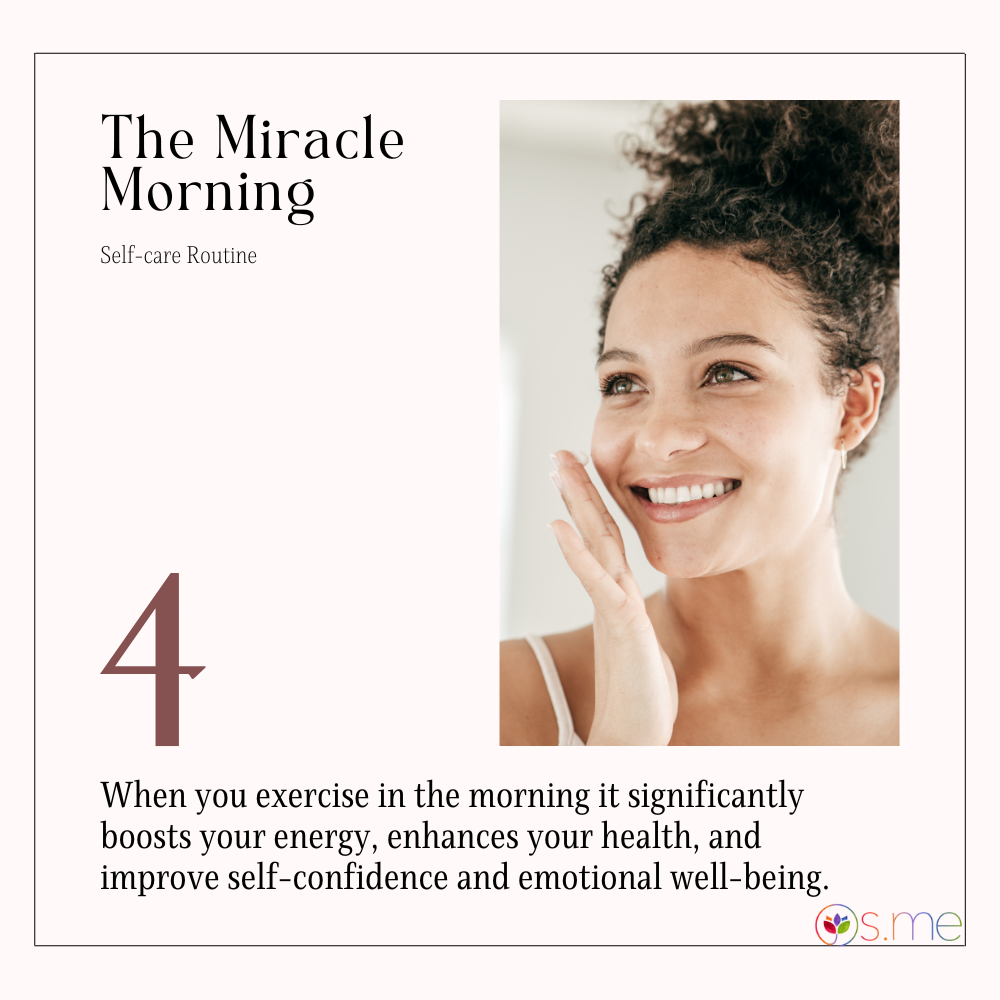


As with any routine, setting a time for your morning meditation practice is essential. Use the same time every day, ideally when you wake up every day, so it becomes a habit more than something you must remember. So, let’s try it with these 6 simple steps.
- Prepare accordingly
In everything you do, it’s ideal for preparing efficiently. Think of it this way—meditation is no different. Make sure you have comfortable clothing, a peaceful environment (if possible), and an open heart and mind. The best time for morning meditation is 5 am to 6 am before the sun even rises—the darkness can be an excellent tool for focusing on yourself and finding inner peace.
- Find your comfort zone
Whether you prefer lying down, sitting cross-legged, or standing up straight, make sure you find a comfortable position that works best for your body. Consider using props like bolsters and blankets to support yourself if needed. I refer to this as my personal space. A place I feel secure and relaxed during my morning meditation practice so that I can focus on my breathing and thoughts without any external disturbances.
- Breathe in & out
Close your eyes and take deep breaths through the nose and out through the mouth. Concentrate on each breath without forcing it, allowing it to flow naturally as though it is coming from your belly. This will help you relax and enter a state of mindfulness more easily.
- Silence your mind
Let go of all the thoughts running through your mind, from worries about the day ahead to random musings that have nothing to do with anything. Just focus on your breathing and let the rest take care of itself. Acknowledge each thought but let it pass without judgment or attachment.
- End with gratitude
When it’s time to end your morning meditation, take a few moments to express gratitude for yourself and for all that you have in life. This can help keep you humble, grateful, and at peace as you start your day with positive energy.
- Take away what you needed
The best part about morning meditation is that you can take away as much or as little as you need. Maybe all you needed was a few moments of calmness and stillness, or maybe you found some clarity in your thoughts. Whatever the outcome, make sure to appreciate yourself for taking this time out of your day—it’s essential for self-care and body improvement!
Morning meditation myths
I was roaming in this new city early morning and passed by a meditation place(Learn more about the best time to meditate). The glass was transparent, and you could see and notice how peaceful everyone looked. However, alongside me was a group of teenagers who negated the idea of morning meditation altogether; they were telling stories like it’s a waste of time and that you won’t achieve anything. It made me think about the myths surrounding meditation, and I had to do my research to discover what are facts and fictions.
Well, I discovered that the best morning meditation is a practice that brings you peace and clarity. It can be as simple as breathing profoundly or more complex, like a meditation technique from ancient India. It doesn’t have to be complicated or lengthy. Some of these myths include the following:
Myth #1: You have to be a Buddhist monk or hippie to meditate
This is not true! There are no rules regarding how or why you choose to meditate. Some people come upon this idea through religion. Others find it through their personal experiences with mental health issues like depression or anxiety. Still, others discover this practice on their own after an intense yoga session left them feeling relaxed in ways they hadn’t felt before (and wanted more). What matters most is finding something that works for your body and mind.
Myth #2: You need fancy equipment or props to meditate properly!
I know; earlier in this post, I mentioned “finding a comfort zone.” Don’t quote me wrong. We can all find comfort even in the most minor places with less equipment. You don’t need to own a meditation cushion or even have a dedicated meditation space. You only need a quiet spot and a comfortable position to focus on your breathing and thoughts. Ideally, all you need is yourself (and maybe some tea). Meditation props like incense sticks may help some people get into the right mindset, but there’s no need for them if they don’t resonate with your personality or lifestyle choices—close your eyes and breathe deeply!
Myth #3: Meditation requires hours of practice
This one I hear pretty often, but the truth is there is no set amount of time (or lotus positions) that equals success when it comes to morning meditation. Some people prefer short sessions, while others enjoy longer ones—it’s all up to preference! The important thing is that you find what works best for you. You can start with five minutes in the morning and build up if it helps.
Myth #4: You must sit cross-legged on the floor with your eyes closed to meditate properly
The truth is that there are many different ways to meditate, and they all depend on what works best for your body. For example, if sitting up straight with your legs crossed makes you uncomfortable, try lying down instead! Some people find it helpful to get into a comfortable position before starting their meditation session; others can focus just as well by standing up or walking around.
Myth #5: Meditation is escapism
This is not true either. Meditation does help bring relaxation and peace, but it also helps to bring awareness to our thoughts and feelings. With regular practice, you can learn how to observe your emotions without being overwhelmed by them or escaping from them. It allows us to take a step back and recognize when we’re feeling stressed or anxious to address those feelings in healthier ways.
Myth #6: Meditation is a spiritual or religious practice
Meditation allows us to clear our minds and focus on the present moment. It is an inclusive practice that anyone can do, regardless of spiritual beliefs. In fact, people of many different religions practice meditation without any conflict with their current religious beliefs.
To clear the doubt about these mythical stories, let me introduce to you The Meditative Mind: A Comprehensive Meta-Analysis of MRI Studies research above.
Over the past decade, mind and body practices, such as yoga and meditation, have raised interest in different scientific fields; in particular, the physiological mechanisms underlying the beneficial effects observed in meditators have been investigated. Neuroimaging studies have studied the effects of meditation on brain structure and function. Findings have helped clarify the biological underpinnings of the positive effects of meditation practice and the possible integration of this technique into standard therapy. The large amount of data collected thus far allows for drawing some conclusions about the neural effects of meditation practice.
In the present study, we used activation likelihood estimation (ALE) analysis to make a coordinate-based meta-analysis of neuroimaging data on the effects of meditation on brain structure and function. Results indicate that meditation activates brain areas involved in processing self-relevant information, self-regulation, focused problem-solving, adaptive behavior, and interoception. Results also show that meditation practice induces functional and structural brain modifications in expert meditators, especially in areas involved in self-referential processes such as self-awareness and self-regulation.
To learn more, read the entire research study here.
This research shows that meditation is not a spiritual or religious exercise and doesn’t require hours of practice. It allows us to observe our emotions without being overwhelmed or trying to escape them. The study found that meditation activates brain areas involved in processing self-relevant information, self-regulation, focused problem-solving, adaptive behavior, and introspections. Furthermore, the research suggests that regular practice can lead to positive long-term brain structure and function changes.
Morning meditation hacks:
If you have been attempting morning meditation, what is your secret? What keeps you motivated and going every morning? We all have morning meditation hacks that help us stay committed to our practice. Suppose you’re a beginner; here are a few that can help you:
Your comfortable space should be heavenly
What do I mean by this? You need to feel at home, at peace, and in a place you enjoy. This will make it easier to look forward to your practice and have positive associations with meditation. Remember that we said it doesn’t have to be expensive. That calming place outside your yard, under your favorite tree, can also be a spot in your favorite chair, near a window facing the sun, or anything you find soothing.
Set yourself up for success
Routines are essential to forming habits and staying motivated with meditation. Try creating a specific time of day to meditate every morning. Also, plan what type of meditation you will do each session: guided? Silent? Breathing exercises? This will make it easy to jump into practice without wasting any time thinking about it.
Be kind to yourself
Sometimes our minds wander, and we can feel frustrated. Please don’t beat yourself up over it. Instead, be gentle and compassionate with yourself. Acknowledge the thoughts and feelings in your practice without judgment or attachment. This will help keep you focused and relaxed.
Set your goals
When starting, set smaller goals for yourself and gradually move on to larger ones. Start by meditating for five minutes every morning and gradually increase the time to 10-15 minutes as you get comfortable with it.
Find a pattern that works for you
For some people, meditating in the wee hours work best for them. Others may prefer when the sun rises. Figure out a pattern that works for you and your lifestyle. It will help you stay consistent and make it easier to stick to your practice.
Try mindful meditation
Mindful meditation helps you become more aware of your thoughts, feelings, and sensations without judgment. It will help you to be present at the moment and focus on what’s happening right now.
What is the most challenging aspect of morning meditation?
When I started morning meditation, the most challenging aspect was finding the motivation to get out of bed and follow through with my practice. The thought of leaving the blanket and the warmth of my bed was daunting. I quickly found that the best way to do this was to set a specific meditation time and ensure I followed through with it. You can also start this way by finding a driving force in you.
I had to remind myself why I started meditating in the first place, what it can do for my well-being, and how important it is to take time out of every day to be present and detach from worries. This helped me stay consistent and motivated with my practice.
Another challenge people often face when starting meditation is getting caught up in their thoughts or being too distracted. It can be helpful to start small by incorporating a few minutes of mindful breathing or body scanning into your morning routine, as this will help you stay focused on the present moment. Additionally, setting an intention before each session can help ground you during your practice.
A morning meditation routine can set you up for a great day.
So, what are the benefits of starting your day with a morning meditation? How do you know if your meditation practice is working for you?
- Meditation can help you focus and be more productive. A morning meditation routine will set you up for success in all areas of your life, including work, family, and relationships.
- It can help you manage stress. Stress is everywhere—the news, social media, and even our minds! A morning meditation routine can give us space to take care of ourselves without feeling guilty or overwhelmed by all we have going on in our lives.
- It can help you sleep better at night (and wake up feeling less sleepy during the day). Those extra few minutes of meditation can help us relax, let go of all our worries, and rest more deeply.
- It can boost your mood and keep you in a positive mind. When we start the day with a practice that helps us connect with ourselves inwardly, it can enhance our mood and outlook on life for the whole day.
Morning meditation stories
I’ve come across many inspiring morning meditation stories over the years. I’m going to share some of them below. They are all an inspiration and an encouragement to continue your meditation journey.

From this story, we can conclude that meditation is incredibly powerful for improving our overall lives. It can help us in many ways, from reducing stress and anxiety to finding inner peace and harmony. It’s worth taking the time to incorporate into your morning routine – it could make all the difference!
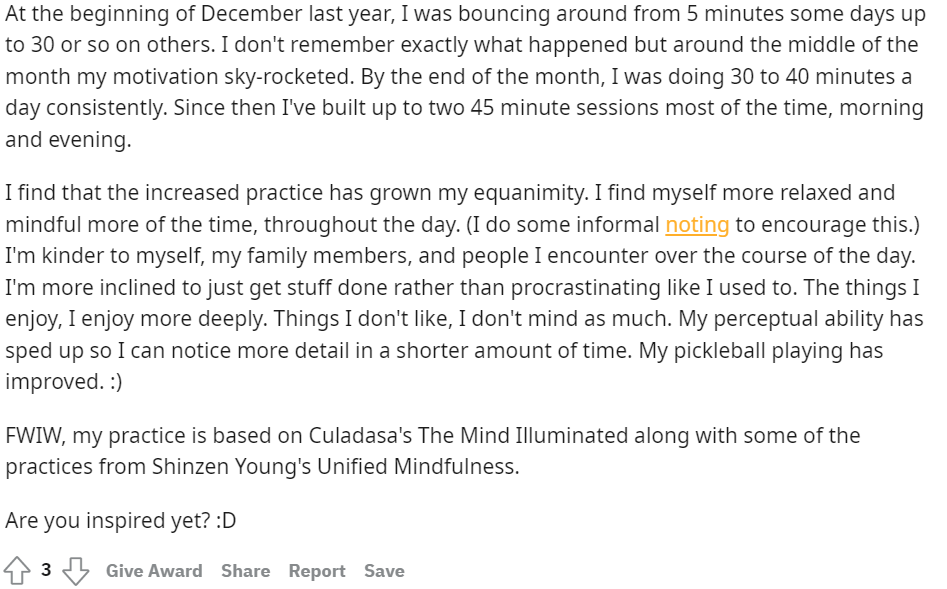
Herein we can learn that a consistent and regular meditation practice can profoundly affect the quality of one’s life. Not only does it increase mindfulness and help to cultivate serenity, but it also strengthens one’s focus, perception, and productivity. Additionally, it can improve performance in activities such as pickleball. It also demonstrates the importance of having a reliable system or guide. This story motivates those who wish to take up regular meditation practice and is an inspiring example of the potential benefits of doing so.
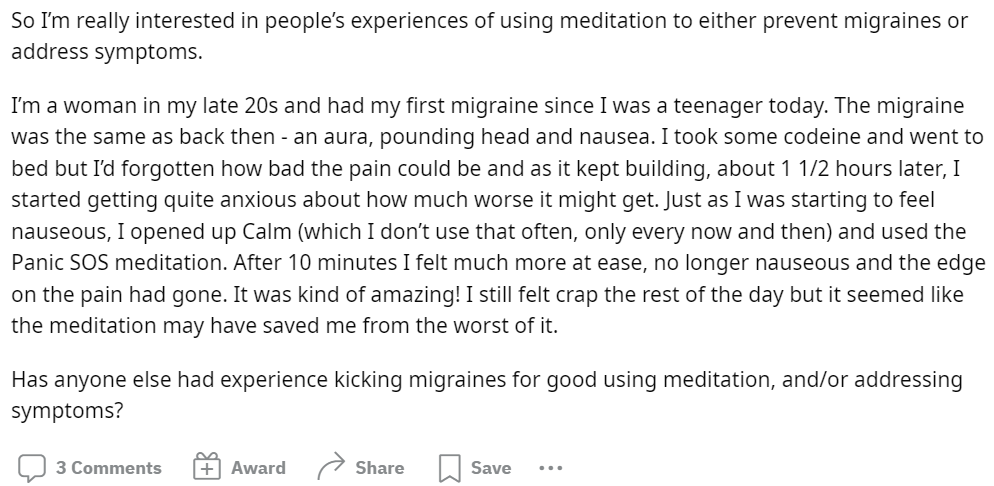
The above is a story that proves how effective meditation can be for a person facing the dreaded migraine. But there is plenty more research out there to back up these results. In cases where frequent migraines may occur due to stress and anxiety, meditation can be effective in reducing these symptoms. Just start small and you’ll soon make it a routine.
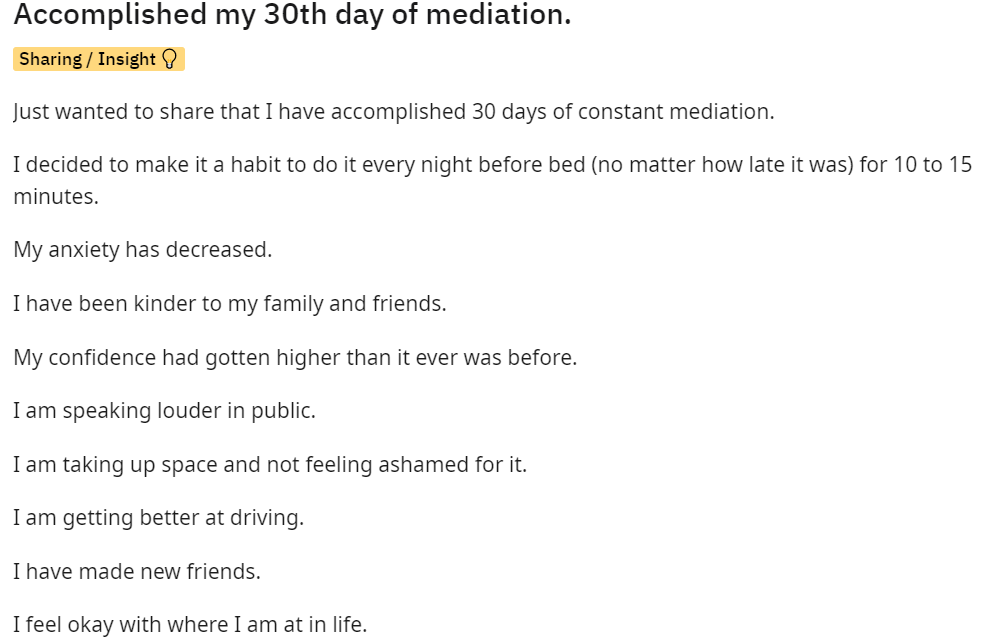
From the above story, it is clear that mediation can be a great way to de-stress and a powerful tool for self-development. You’ll find great peace and confidence in your daily practice and motivate others to try it out! You ‘l experience positive change in your life, and you’ll be thankful for having taken the step to try meditation.
FAQs on morning meditation
What meditation practice is good for the morning?
A few practices can make your morning go smoothly and with minimal worries.
- Hatha yoga: This consists of gentle physical postures, breathing exercises, and deep relaxation, which can help you wake up and start your day with energy, clarity, and focus.
- Mindfulness meditation. This is a great way to practice being present in the moment and becoming aware of our thoughts and feelings without judgment.
- Shower meditation: Are you the kind that jumps into the shower the first thing when you open your eyes? Well, instead of just thinking about what you have to do during the day, focus on your breathing and observe the sensation of the water running over your body. Take 5-10 minutes to calm your mind and relax your body before starting the day.
- Visualization: Going for a walk can be an ideal way to start your day. While walking, practice being mindful and connecting with nature around you. Notice the trees, the birds, the clouds – focus on what your body is doing as it moves and avoid being distracted. As you take each step, silently repeat a mantra or affirmation that resonates with you.
What should you not do after meditation?
Whatever you do after meditation, ensure that it brings peace and calm to your mind. Avoid activities that can disrupt your sense of inner balance. For example, if you choose a mindful meditation approach to your day-to-day activities: take your time and be mindful of each task you’re doing when you start a morning meditation. This could mean focusing on how it feels when you brush your teeth or noticing the sound of the water while washing dishes. Be present in every moment rather than letting your thoughts spiral out of control.
Additionally, avoid any intoxicating substances like alcohol or drugs, as they can interfere with your meditation practice and negatively affect you.
Don’t give up on yourself. Results take time and practice. If you don’t feel like you are seeing the results you want right away, be patient and remember that it takes time to reach your goals.
Do not be negative. You’re done with your morning meditations, so your day should be filled with positivity and good vibes. That is when meditation is the first thing in the morning to do.
What is incorrect meditation?
Incorrect meditation is when someone does not follow a set of guidelines or instructions for the practice, which can negatively affect their experience or results. For example, someone who meditates while angry or stressed out is not likely to reap the same benefits as someone calm and relaxed. Additionally, if someone contemplates incorrectly, they may not be able to control their thoughts or emotions as well as they would like, leading to frustration or anxiety.
How do I know if I am meditating correctly?
There are different ways to know that you’re reaping the best from your morning meditation. If you notice the following, you should keep up the good work and routine.
- You have a heightened awareness: Your body and mind should become more connected when you meditate. You will start to notice things around you that were previously hidden or hard to observe because of the chaos in your life.
- You feel calmer: Meditation effectively reduces stress and anxiety, so if you feel calm after a session, you are likely doing it correctly.
- Your mood improves: If you’re regularly meditating in the morning, chances are that it has also improved your overall mood for the rest of the day. Pay attention to how your emotions change after each session and look for signs of improvement. If you notice that small things don’t bother you as much, you’re doing everything right.
- You have more focus and clarity: This is when you experience increased concentration and focus. Through your practice, you can become more aware and focused as thoughts that were once scattered will now be clearer and easier to manage.
When should I not meditate?
Most people think of meditation as a calming activity that can help to reduce stress and promote relaxation. However, there are some situations when meditation may not be the best choice. If you are feeling agitated or anxious, meditation can increase these feelings. If you are tired or have trouble concentrating or finding the right posture, meditation may not be effective. It is also essential to choose a quiet place to meditate, as background noise can make it difficult to focus. In addition, avoid meditating on a full stomach, as this can lead to discomfort. Finally, if you are feeling physically ill, it is best to consult a doctor before meditating, as some styles of meditation can worsen symptoms like dizziness and nausea.
Conclusion
When it comes to morning meditation, there are a lot of myths out there. The best way to set the record straight is by looking at facts and stories from real people who practice this powerful habit.
To conclude, check out this study: The Effectiveness of a Centering Meditation Intervention on College Stress and Mindfulness: A Randomized Controlled Trial that emphasizes centering prayer.
Centering meditation is based on an early Christian mystic practice called centering prayer, developed by the Desert Fathers and Mothers in the third century (Keating, 2002). The focus of centering prayer is interior silence which the early Christian mystics to develop deeper communion with God. Like other concentration meditations that use a symbol for focus (Goleman, 1988), practitioners select a word or symbol they hold sacred (e.g., Shalom, hope) and use it to bring back their minds from distractions. However, unlike many other meditations, centering prayer focuses not on the mind but instead areas of spiritual connection. Centering meditation is based on an early Christian mystic practice called centering prayer, developed by the Desert Fathers and Mothers in the third century (Keating, 2002). The focus of centering prayer is interior silence which the early Christian mystics to develop deeper communion with God. Like other concentration meditations that use a symbol for focus (Goleman, 1988), practitioners select a word or symbol they hold sacred (e.g., Shalom, hope) and use it to bring back their minds from distractions. However, unlike many other meditations, centering prayer focuses not on the mind but rather areas of spiritual connection.
The study suggests that centering meditation can be an effective and safe tool for managing college stress. In the study, participants who used the centering meditation techniques reported significantly reduced negative emotions such as depression, anxiety, guilt, and shame. The results of this study also indicate that short-term use of centering meditation may positively affect the psychological well-being of college students.
To cut things short, if you are looking for a way to reduce stress, improve your mood and focus and gain clarity in your life, then morning meditation could be the perfect habit. It can help create an inner peace that will stay with you all day. So give it a try and see what happens.

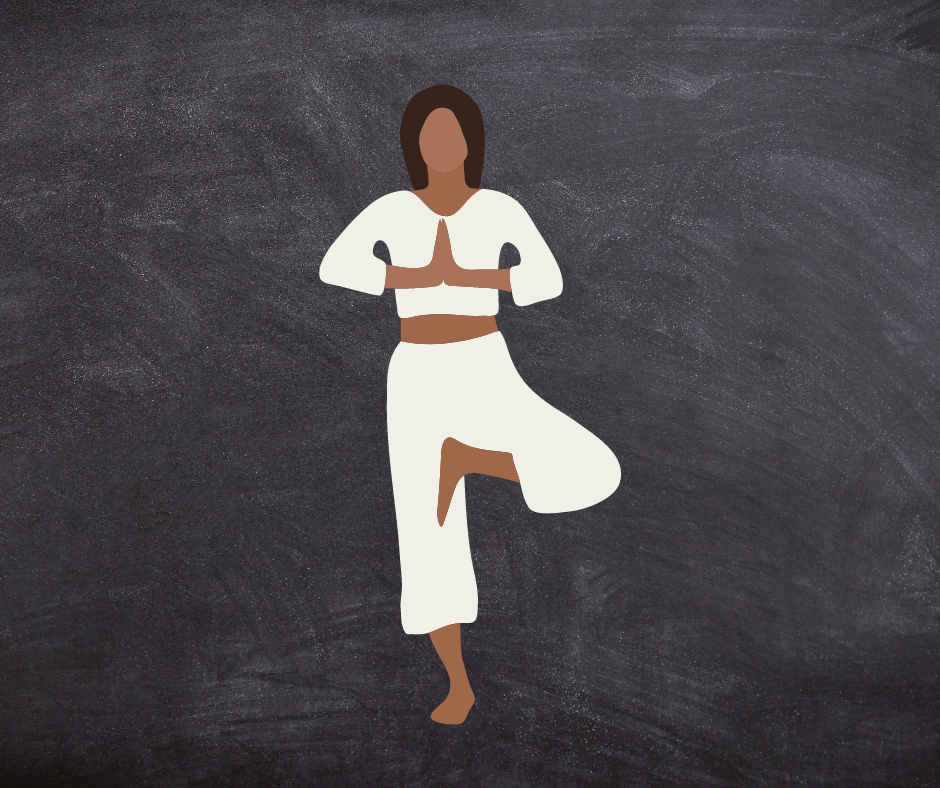







Comments & Discussion
1 COMMENTS
Please login to read members' comments and participate in the discussion.